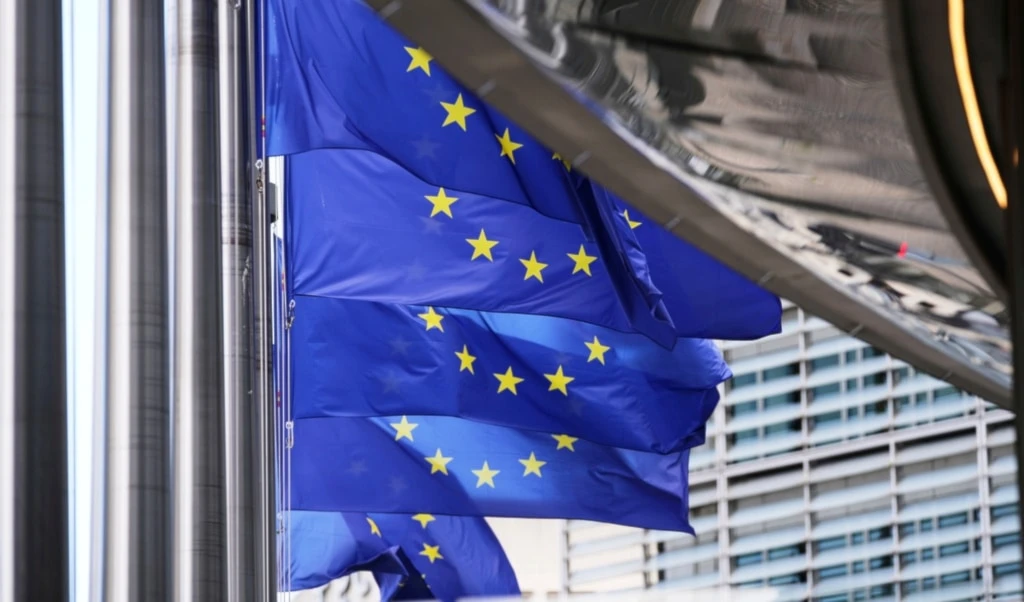NATO rearmament could result in 200mln tonnes in emissions yearly
NATO’s rearmament threatens climate goals and fueling future conflicts, a new study warns.
-

A Ukrainian tank passes by a burning car near the Russian-Ukrainian border in the Sumy region of Ukraine (AP)
A new analysis warns that NATO’s planned rearmament could raise greenhouse gas emissions by as much as 200 million tonnes per year, posing a serious challenge to achieving international climate targets, The Guardian reported.
As global military spending hit a record $2.46 trillion in 2023, researchers say the defense buildup is accelerating environmental degradation and increasing the likelihood of future conflicts.
The study, prepared for the UN Office for Disarmament Affairs and shared exclusively with The Guardian, focuses on NATO members’ pledges to ramp up military expenditure in response to rising global tensions.
Researchers estimate that if NATO allies, excluding the US, increase defense budgets by two percentage points of GDP, the resulting emissions would be equivalent to those of a country the size of Pakistan.
Militaries are among the world’s most carbon-intensive institutions. Heavy equipment, steel and aluminum procurement, fuel consumption for aircraft and armored vehicles, and overseas operations contribute significantly to their carbon footprint. “Armies are highly mobile and fossil fuel–dependent,” said Lennard de Klerk, co-author of the study and a researcher with the Initiative on the GHG Accounting of War.
As The Guardian reported, the researchers focused on NATO countries due to the relative transparency of their military budgets and emissions data. The analysis excludes the United States, whose existing defense budget far exceeds that of its allies and skews bloc-wide averages.
Global rearmament threatens long-term climate security
According to co-author Ellie Kinney of the Conflict and Environment Observatory, the prioritization of short-term military security is jeopardizing long-term planetary stability.
“We’re worsening the climate crisis through increased emissions, which will in turn lead to further instability and conflict,” she said.
In comments to The Guardian, Kinney cited examples like Sudan’s Darfur region, where desertification exacerbated resource competition, and the Arctic, where melting sea ice is driving territorial tensions over oil, gas, and mineral reserves. Militarization, she emphasized, risks becoming a self-reinforcing driver of insecurity.
ReArm Europe plan would dramatically boost emissions
The EU’s proposed €800 billion “ReArm Europe” initiative would further deepen this crisis. With European weapons spending up more than 30% since 2021, researchers warn that climate goals, especially SDG 13 on climate action, are being sidelined.
The shift toward a 3.5% GDP defense target, up from 1.5% in 2020, is already underway in several NATO countries.
According to The Guardian, the study estimates a cost of up to $264 billion per year from NATO’s emissions increase alone, using current social cost of carbon metrics.
But even this figure only reflects data from 31 countries, less than 10% of global emissions, underscoring the limited scope of existing military carbon accounting.
Climate funding eroded by growing defense budgets
The study also highlights the financial opportunity costs of militarization. Increased defense budgets in countries like the UK, Belgium, France, and the Netherlands have coincided with cuts to overseas aid and climate finance.
Researchers warn this undermines both global trust and multilateral cooperation on climate solutions.
As The Guardian noted, this tension has been especially evident at international climate forums, where countries from the Global South, including Cuba, have criticized industrialized nations for pledging massive sums to defense while offering only limited support for climate adaptation and mitigation.
The researchers conclude that militarization must be recognized as a central threat to international climate objectives.
The combination of increased fossil fuel use, decreased transparency, and diverted funding is driving emissions and instability alike. Unless global defense strategies are fundamentally reconsidered, they argue, the world risks trading one form of insecurity for another, climate collapse.

 4 Min Read
4 Min Read










